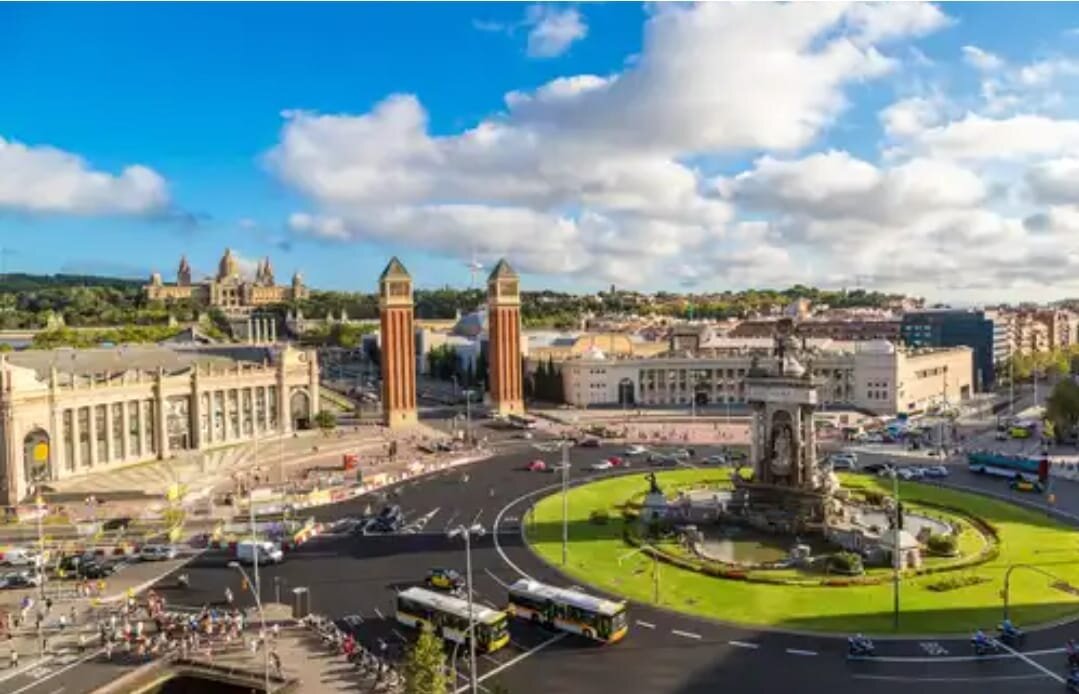
The Plaza de España in Barcelona (in Catalan and officially Plaça d’Espanya) is one of the most emblematic spaces of the Catalan capital. It was built during the 1929 International Exhibition, according to a project prepared by Josep Puig i Cadafalch and Guillem Busquets and completed by Antoni Darder.
With 34,000 m², it is the second largest square in Spain,[1] after Plaza de España in Madrid, and ahead of Plaza de Cataluña in Barcelona.
It is an important center of traffic in the city, as the Gran Vía de las Cortes Catalanas, Avenida del Paralelo, Calle Tarragona, Calle Creu Coberta and Avenida de la Reina María Cristina come together, through which accesses the Montjuic area, and where the Trade Fair and the National Art Museum of Catalonia are located. Other important buildings in the square are the Las Arenas Shopping Center (former bullring, a Neo-Mudéjar style work by Augusto Font Carreras) and the Hotel Plaza, as well as the so-called Venetian Towers, the work of Ramon Reventós, built for the 1929 Exhibition There is also the Municipal Institute of Education and a police station of the Mozos de Escuadra.
